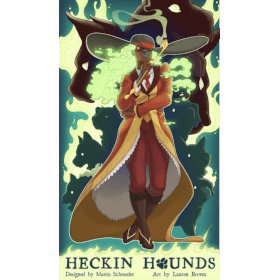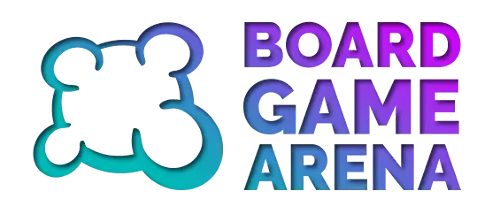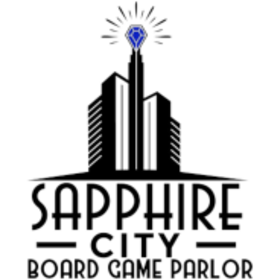Heckin Hounds
 Heckin Hounds 是一款 需要2 至 7 名玩家的吃墩遊戲。玩家可以探索在地下世界中專業遛狗的危險。
Heckin Hounds 是一款 需要2 至 7 名玩家的吃墩遊戲。玩家可以探索在地下世界中專業遛狗的危險。
玩家的任務是帶冥界的獵犬去蹓達。若然你把工作做得太好,你將會被提拔到管理層—這是領域中最為人害怕的責任。但若然你把工作做得太差,你也會被降級-成為專業狗糧。
遊戲中你的手牌只有別人可以看到,不知道你有多少獵犬。每一輪都有一個不同的玩家擔任輪班組長,他們可以看到自己的手和其他人的手。輪班組長給每個玩家三條線索,說明他們所持的獵犬——這些線索對你有多有用、有多無用或有多迷惑力,但它們必須是真的。輪班組長還將地獄犬分配給一名玩家,這是一名王牌小狗,只要他出現,他都會贏。
玩家需要捉緊運氣與機會,並根據手上有限的提示及透過觀察對手的手牌去承諾自己將工作多少班次(獲得的墩數)。當牌被打出,而玩家獲得墩數後,新一輪會開始。
在每個人輪流擔任班長之後,遊戲就結束了。得分最少而且沒出現負分的玩家在沒有被解僱的情況下完成了最少的工作,並贏得了比賽!
因此,Heckin Hounds 是一款勉強夠用的遊戲。
玩家人數: 2 - 7
遊戲歷時: 26 mn
複雜度 3 / 5
在線上玩 Heckin Hounds 以及 1003 款其他遊戲。
無需下載──直接用你的網路瀏覽器玩。
與你的朋友以及全世界成千上萬的玩家們。
免費。

在線上玩 Heckin Hounds 以及 1003 款其他遊戲。
無需下載──直接用你的網路瀏覽器玩。
與你的朋友以及全世界成千上萬的玩家們。
免費。

規則摘要
[These instructions are taken from, and in some cases modified, from the Heckin Hounds rulebook]
Big Picture
Heckin Hounds is a trick taking game where you don't always know what cards you have and get the chance to provide incomplete information to the other players. As a part of your dog walking responsibilities, you must promise (bid) to work a certain number of shifts (take a certain number of tricks) each round. If you make good on your promises (make your bid) your points don't change. If you under promise (underbid - take more tricks than bid) you gain points. If you over promise (overbid - take fewer tricks than bid) you lose points. The game lasts a number of rounds equal to the number of players. At the end of the final round, the player at zero points or closest to zero points, while not being negative, wins the game.
The Cards
The game is played with six unique suits of cards and a single all-powerful trump card, with the following top to bottom trick-taking hierarchy:
- Cerberus - all powerful, takes any trick. The Shift Leader assigns it to one player each round.
- Deathpaw - Suit is included in the initial hand deal.
- Paulgrave - Suit is included in the initial hand deal.
- Sudachi - Suit is included in the initial hand deal.
- Tom Dire - Suit is included in the initial hand deal.
- Evil Molly - Suit is included in the initial hand deal.
- Mops - The lowest ranked Mops suit is not included in the initial hand deal, but is instead mixed with the undealt cards to form a 'dead hand'. During the round preparation, each player will have a chance to blindly exchange one of their cards with a card in the dead hand.
Each of the dog suits contains numerical cards going from 1 to N+1, where N is the number of players. So, for example, in a 4 player game the suit cards valued 1 through 5 would be used.
BGA Gameplay Overview
Heckin Hounds is played over a number of rounds equal to the number of players, each consisting of five tricks. Each round is overseen by a Shift Leader. The Shift Leader can see everyone’s hand, including their own. All other players can only see the hands of all the other players who are not the Shift Leader. The overall game flow on BGA is:
- The Shift Leader performs the following tasks:
- Chooses which suit is the 'bad dog'
- Gives three clues to each player about the dog cards in their hands
- Assigns Cerberus to a player
- Players, starting with the Shift Leader, perform the following tasks:
- Choose whether or not to trade with the dead hand
- Promise/bid to take a certain number of tricks/shifts
- The five tricks/shifts are played, with the Shift Leader leading a card for the first shift/trick
- After the fifth shift/trick, the round is scored and the Shift Leader rotates to the next player
- After the last round, the final score is determined
BGA Gameplay Details
- The Shift Leader performs the following tasks:
- Chooses which suit is the 'bad dog'
- The bad dog assignment is an end of game tie-breaking mechanism. If a player takes a trick with a bad dog in it, the players bad dog score increases by one point for each bad dog card they have taken.
- The bad dog for the round is indicated by the "+1" black circle on the hound suit hierarchy list.
- Gives three clues to each player about the dogs in their hands
- The Shift Leader provides three clues to each player regarding their hand of cards. The Shift Leader can provide as little or as much information as possible and is not required to provide clues on every card. Clues are given by clicking on a card and selecting from the available clues options. Indicator tokens are automatically placed next to the cards based on the clues provided. Each set of clues must provide new information, but a single clue can lead to duplicate information having been given. Each clue must follow one of these three rules:
- Hound name/type (at least two cards, and all cards of that hound must be pointed out)
- Hound value (at least two cards, and all of that value must be pointed out)
- Both hound type and value for a single card.
- The Shift Leader provides three clues to each player regarding their hand of cards. The Shift Leader can provide as little or as much information as possible and is not required to provide clues on every card. Clues are given by clicking on a card and selecting from the available clues options. Indicator tokens are automatically placed next to the cards based on the clues provided. Each set of clues must provide new information, but a single clue can lead to duplicate information having been given. Each clue must follow one of these three rules:
- Assigns Cerberus to a player
- Cerberus is the worst dog in the underworld to walk and automatically wins the trick it is played on. The Shift Leader assigns one player, which can be themselves, to take Cerberus. The chosen player discards one card of their choice from their hand and replaces it with Cerberus. The discarded card is out of play for the round and is not placed in the dead hand.
- Chooses which suit is the 'bad dog'
- Players, starting with the Shift Leader, perform the following tasks:
- Choose whether or not to trade with the dead hand
- The starting dead hand is made up of the Mops suit cards and the remaining undealt cards at the start of each round.
- Each player, starting with the Shift Leader and proceeding clockwise, may optionally trade one card (but not Cerberus) with the dead hand. This card is set aside face down, a new card is drawn from the dead hand, and finally the set aside card is shuffled into the dead hand before the next player chooses to trade. Any player that chose to trade receives a Mops token next to the new dead hand card to help remind them which card they traded in, that now may or may not be Mops.
- Cards taken from the dead hand remain hidden from everyone until all players have chosen whether to trade with the dead hand. When all players have made their choice, the traded cards are revealed according to the players' positions (Shift Leader or not).
- Promise/bid to take a certain number of shifts/tricks
- Each player, starting with the Shift Leader and proceeding clockwise, promises (bids) to work a number of shifts (take a certain number of tricks). A player can bid between 0 and 5 shifts in a single round.
- Choose whether or not to trade with the dead hand
- The five shifts are played, with the Shift Leader leading a card for the first shift
- Starting with the Shift Leader and proceeding clockwise, each player plays any card in their card stand face up into a shift. A player does not need to follow hound suit.
- The winner is whomever plays the hardest to walk dog - Cerberus is harder to walk than Deathpaw, who is harder to walk than Paulgrave, and so forth. In the case of two of the same hound being played, the one with the higher value is the harder to walk.
- The cards are collected and, if any of those cards were the extra bad dog, the winning player gains one badness point for each extra bad dog that they had to walk.
- Tricks taken in the current round are tracked in the 'Shift' location near the player's name.
- The player who won the trick, leads any card to begin the next trick.
- After the fifth shift, the round is scored. After the last round, the final score is determined, else the Shift Leader rotates to the next player
- If a player bids more tricks than they took then decrease their score one point for each trick they missed
- If a player took more tricks than they bid then increase their score by one point for each extra trick.
- If a player took the exact amount of tricks they bid then the player has no change in score.
End of the Game
After each player has had a turn being Shift Leader, the game ends and final scores are tallied. The player with the lowest score (zero, or closest to zero) without being negative, wins the game. In the case of a tie, the player with the lowest badness value (earned from all the bad dog cards taken in tricks) wins the game. If there is still a tie, all tied players win.


